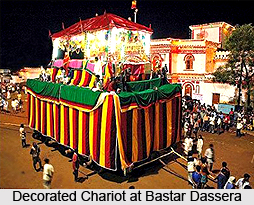Kodukku Neekkal is an important custom that is peculiar to the South Indian people. The corners of a towel or a cloth are given the name of Kodukku. The reason behind it can be said as at times owing to the careless shaking of cloths by people stride the eye of someone resulting a kind of eye disease. This disease is called by the people as Kodukku. Medicines like eye drops do not cure this disease and the people to affect a cure follow a peculiar custom. They say that the practice is generally efficacious and brings about the cure of the complaint. If by some accident or other, a boy or a girl or a man or a woman happen to suffer from this Kodukku-padal as the disease is called in Tamil, then some member of the house, generally a woman, takes some water in a vessel steeped in turmeric and goes to seven houses successively one after another. As she should not open her mouth and talk, she simply stands there till the attention of the lady of the house is drawn to her. She would understand even from the vessel containing the turmeric water brought by the other women the purpose she had come for. If she does not, this woman with the turmeric water, by dumb shows points out her eye and the corner of her cloth thereby indicating the purpose she has come for.
As this custom is most common, no difficulty is felt anywhere to achieve the end in view by the lady coming with the vessel of turmeric water. The lady of the house dips a corner of her cloth in the yellow water a few times after which the lady with the turmeric water goes to another house to have the process repeated there. After having gone to seven houses as described above and after having had the corners of the cloths worn by the ladies of those houses dipped in the turmeric water, the woman returns home. There the patient suffering from Kodukku is made to stand in a corner of the courtyard where two roofs meet and goes by the name of Koodu- Voi-Moolai. An old broom is then held from the corner of the roof and the turmeric water is made to fall through it. The patient suffering from Kodukku washes his eye with the turmeric water falling through the old broom. This process is repeated a few days and then the patient is completely cured.
A good deal of this custom may appear absurd; yet experience has shown to the people that this practice produces beneficial results. As a matter of fact people don`t know whether the practice is absurd or not. And because of this reason even some of the educated skeptics who had the misfortune to suffer from this complaint of Kodukku have submitted to this treatment. But it can be tried to give a rational explanation of this action. It is known to all that turmeric has healing properties. If slaked lime happens to come into contact with the eye or any other delicate part of the body it is the practice to apply turmeric water freely to counteract the evil effect of chunam or slaked lime. Children suffering from sore eyes in villages are provided with pieces of cloths dyed with saffron or turmeric to wipe their eyes with. So the saffron water might play a very prominent part in healing the complaint of the eye due to Kodukku. As regards the portion of the custom relating to the corners of the cloths and the saffron water being dipped into with them by the ladies. One can only speculate as to the probable reason for it. The cloths worn by men and women are saturated with their magnetism. As they are being overcharged every moment, a portion of the magnetism in the cloth is always escaping into space through the corners of the cloths worn by men and women. The dipping of the corners of the cloths into the saffron water charges it perhaps with the escaping magnetism and this coming into contact with the magnetism left in the eye of the patient by Kodukku-padal. This action eventually neutralizes its evil effects. The complaint due to Kodukku is not cured with eye-drops, etc. So it gives room to say that the ailment is not due so much to the injury in the eye but to the magnetism left in it by the Kodukku-padal.
As regards the use of the broom it can be said that the broom too might have some share in the cure of the ailment due to Kodukku. The earth is charged with the magnetism of different sorts and conditions of people. The broom sweeping the ground is perhaps charged with diverse kinds of magnetism. When saffron water overcharged with the personal magnetism of seven ladies who dipped the corners of their cloths into it is poured through the broom, the magnetism in it was perhaps carried down by the saffron water, which, when made use of by the patient, secured for him freedom from ailment.
The reason why the lady going with the saffron water should not talk is perhaps difficult even to speculate upon. She is perhaps trying to aid in magnetizing the saffron water powerfully by her power of concentrating the will on it. If she were permitted to talk and say about the object of her visit, she might be led to talk on other things also. Then the oneness of purpose may be destroyed which may perhaps nullify all the other efforts.
In these way all the explanation can be given to make the point strong in favour of these actions and all the explanation must be scientific in all aspect.





